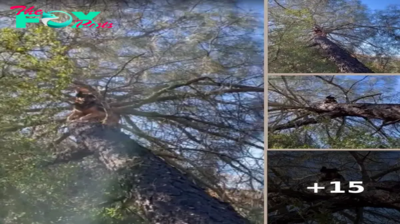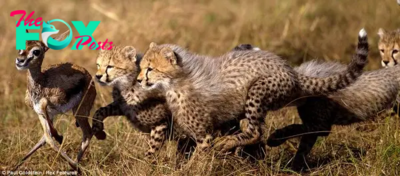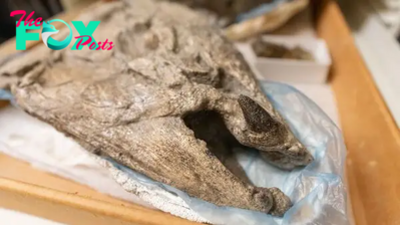Animals
Watch ancient, giant millipede the size of a car brought back to life in remarkable reconstruction
A remarkable reconstruction shows a 300 million-year-old millipede the length of a small car crawling around a forest floor looking for love.
The footage was created for Netflix's "Life on Our Planet" — a series that brings extinct creatures back to virtual life in video footage. The clip shows Arthropleura, which at 8.5 feet (2.6 meters) long and 1.6 feet (0.5 m) wide was the biggest millipede to ever live. It likely weighed about 110 pounds (50 kilograms).
Scientists first discovered Arthropleura fossils 170 years ago. They lived in what is now the U.K., continental Europe and North America during the Carboniferous Period (359 million to 299 million years ago). In 2018, a chance discovery of an enormous, near-complete specimen provided a new, detailed look at the creature's anatomy — which the team behind "Life on Our Planet" used to help them reconstruct this ancient creature.
"Arthropleura is one of the most factually accurate creatures in the series and one of the most accurate versions of this creature ever brought to life," series producer and director Sophie Lanfear told Live Science in an email.
Tom Fletcher, a Honorary Research Fellow of Palaeobiology at the University of Leicester in the U.K., and paleontologist Dave Marshall, a PhD student studying the evolution of chelicerates at the University of Bristol, U.K., acted as scientific advisors on the clip, while the team kept pet millipedes — "tiny versions of arthropleura," Lanfear said — to help them develop the animation and overall look of supersized insect.
Related: 'Once again, innovation and proliferation ended with catastrophe': The environmental disaster of plants taking over the world
At the time Arthropleura lived, oxygen levels on Earth were far higher than they are today. Forests had sprouted up, sucking carbon dioxide from the atmosphere. Giant arthropods dominated the planet, along with other huge insects like Meganeura — a bird-size dragoNFLy — and giant cockroaches up to 4 inches (10 centimeters) long. The high oxygen levels likely played a role in the giant millipedes' enormous size, although exactly how it helped them grow is unclear.
-

 Animals25m ago
Animals25m agoAmazing! Online Community Stunned by Rare Appearance of Two-Headed Turtle in the United States
-

 Animals1h ago
Animals1h agoGuy Out For A Drive Looks Up And Sees A Familiar Face Stuck In A Tree
-

 Animals1h ago
Animals1h agoSkinny, Hairless Shelter Dog Shocks Her Adopter By Becoming Super Fluffy
-

 Animals2h ago
Animals2h agoLamz.The Bear Cave: Two Cubs, One Missing Mother, and a Heartwarming Ending
-

 Animals4h ago
Animals4h agoSAO. “Exploring the Hunt: Experience the Excitement of Cheetah Cubs Perfecting the Art of Gazelle Hunting on the African Savannah”.SAO
-

 Animals4h ago
Animals4h agokp6.Gentle Giants of Love: A Wedding Spectacle with Elephants Representing Everlasting Devotion.
-

 Animals6h ago
Animals6h agoSea Turtle Hatchlings Discovered in Louisiana After 75-Year Absence
-

 Animals7h ago
Animals7h agoHis New Family Found Him Naked — And Promised He’d Never Be Cold Again


























